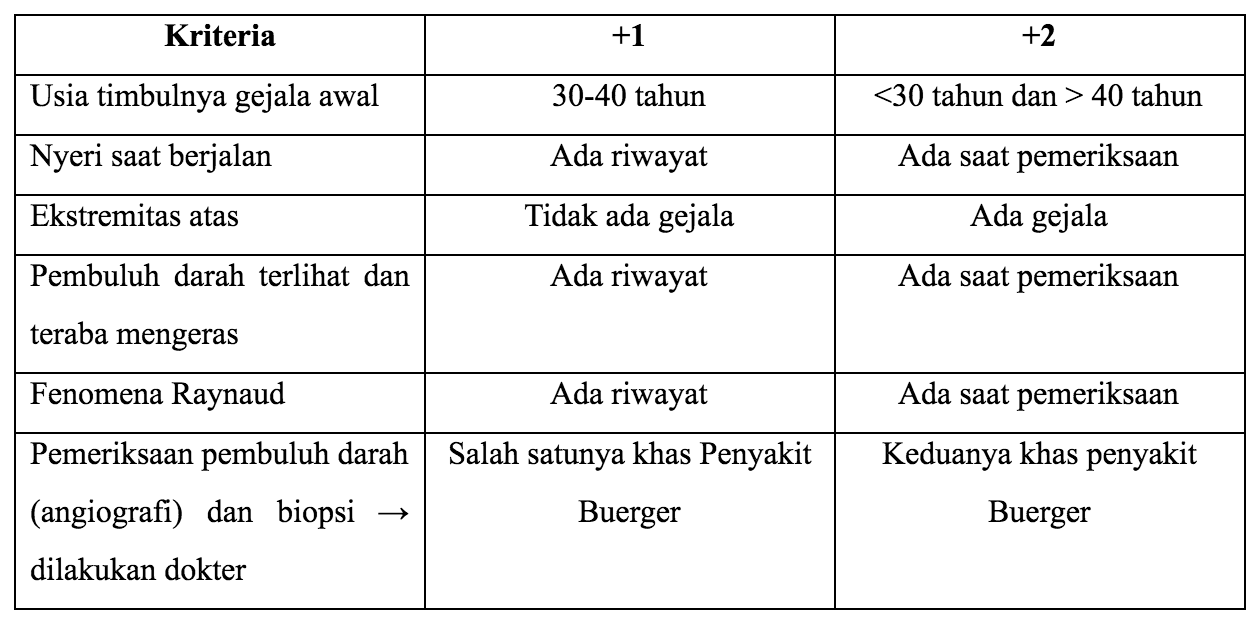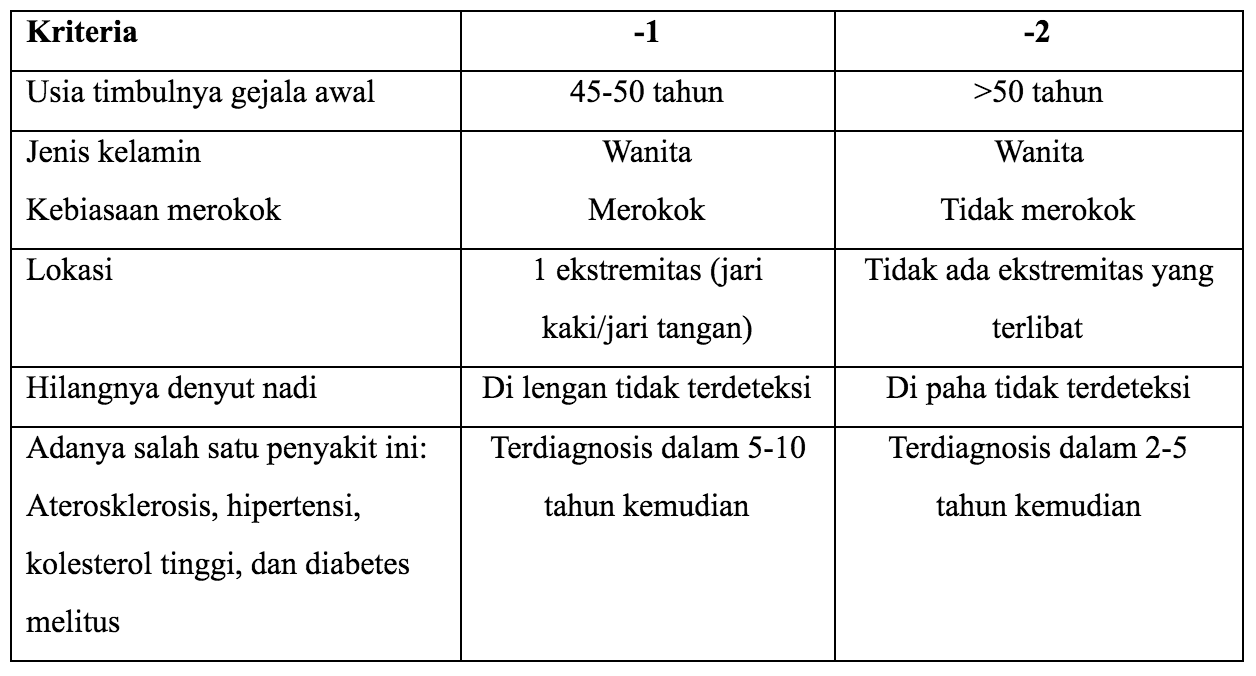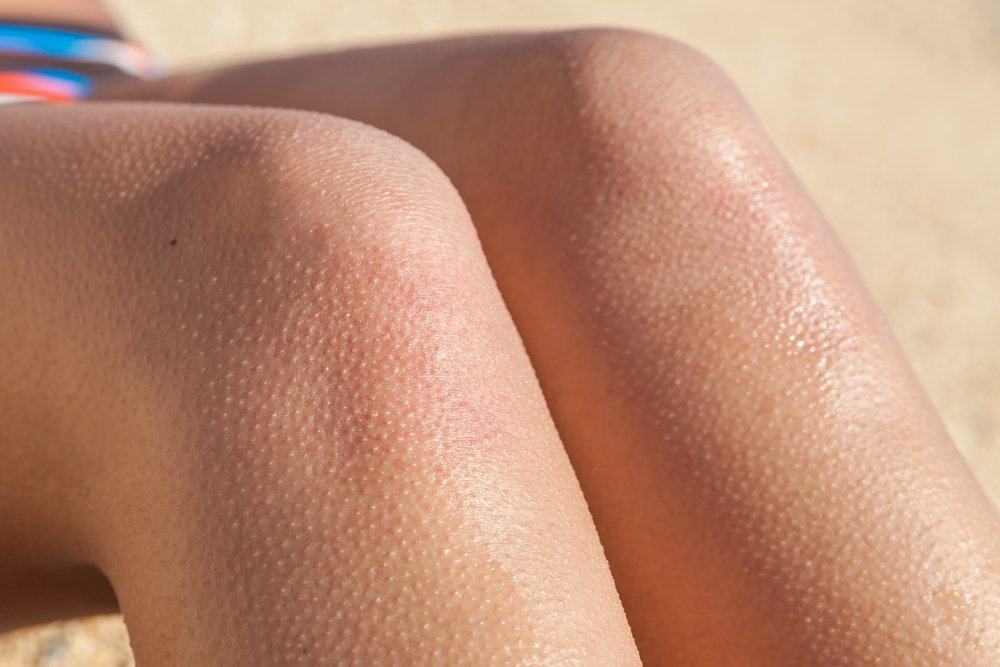Contents:
- Medical Video: Berger disease for smoking. loss the leg pulse.
- What is Buerger disease?
- Why does Buerger disease only affect smokers?
- 1. Nicotine
- 2. Carbon monoxide (CO)
- 3. Tar
- What are the symptoms of Buerger's disease?
- Do you have the potential to get Buerger's disease?
Medical Video: Berger disease for smoking. loss the leg pulse.
Smoking has become a habit for some people, especially in Indonesia. The number of people aged ≥15 years who smoke and chew tobacco tends to increase from year to year. According to the Basic Health Research (RISKESDAS) of the Indonesian Ministry of Health, this increase was shown in Riskesdas 2007 (34.2%), Riskesdas 2010 (34.7%) and Riskesdas 2013 (36.3%).
Smoking habits cause many medical disorders, namely lung cancer, oral cancer, and vascular disease. One of the vascular diseases that only attacks smokers is called Buerger disease.
What is Buerger disease?
Buerger Disease or in the medical world is called Thromboangiitis Obliterans are vascular diseases (arteries & veins) that are specifically attacking the limbs and rarely on internal instruments. The disorder is in the form of inflammation and blockage by thrombus in the affected area, especially small blood vessels and is in the legs and arms. The blockage and inflammation that occurs causes the ends of the limbs to lack oxygen, die, then rot.
Nearly 100% of cases of Buerger Disease attack smokers in young adulthood. This disease is mostly found in Korea, Japan, Indonesia, India and other countries in South Asia, Southeast Asia and East Asia. Deaths caused by Buerger's disease are rare, but in patients with this disease who continue to smoke, 43% of patients have to do one or more amputations 6-7 years later.
Why does Buerger disease only affect smokers?
Cigarettes contain approximately 4000 substances, and 200 of them are harmful to health. The main toxins in cigarettes are nicotine, carbon monoxide and tar. There are various types of cigarettes on the market, namely white cigarettes, clove cigarettes and cigar cigarettes. White cigarettes contain 14-15 mg tar and 5 mg nicotine, while clove cigarettes contain around 20 mg tar and 4-5 mg nicotine. This shows that the tar and nicotine content in clove cigarettes is higher than white cigarettes. The highest tar and nicotine content in cigars because of their larger size. How do these 3 substances cause Buerger Disease? See the following explanation.
1. Nicotine
Nicotine can damage nerves, interfere with brain and heart function. Nicotine can also interfere with the sympathetic nervous system by stimulating the release of adrenaline, increasing heart rate, blood pressure and heart oxygen demand, and causing heart rhythm disturbances. In blood vessels, nicotine functions to call platelet blood cells and cause platelet attachment to the walls of blood vessels. This pile triggers inflammation so that more waste accumulates in the walls of blood vessels resulting in narrowing. Narrowing of blood vessels at the end of the body (toes and fingers) due to nicotine will increase the risk of ateriosclerosis, this narrowing causes the flow to be blocked so that the part that is less blood will die and rot.
2. Carbon monoxide (CO)
Carbon monoxide (CO) gas has a strong tendency to bind to hemoglobin in erythrocytes. Hemoglobin should bind to oxygen to be distributed throughout the body. In fact, the level of CO gas in non-smoker blood is less than 1%, while in the blood smokers reach 4-15%. Automatically for smokers, CO will reduce oxygen delivery to tissues throughout the body. Carbon monoxide also interferes with the release of oxygen, accelerates atherosclerosis, and increases blood viscosity, thereby facilitating blood clots. This combination causes the flow to be blocked towards the ends of the body so that the part decays quickly due to lack of oxygen.
3. Tar
Tar is a solid component of cigarette smoke that is carcinogenic. When the cigarette is smoked, tar enters the oral cavity in the form of solid steam. After cold, tar will become solid and form brown deposits on the surface of the teeth, respiratory tract, and lungs. This precipitation varies between 3 - 40 mg per cigarette. Tar is also believed to cause damaged blood vessel walls so that it can cause a pile of garbage which then clogs up.
What are the symptoms of Buerger's disease?
- The first symptom is claudication or pain when walking.
- The initial phase shows reddish, slightly painful skin, and the vein is palpable as a hardened channel for several millimeters to centimeters below the skin. This disorder often appears in several places in the extremity and lasts for several weeks. After that, the bumps appear.
- In more severe blockages, the pain is greater and lasts longer, even pain at rest.
- Patients often experience phenomena Raynaud, a condition where the tip of the body (fingers, heels, hands, feet) becomes white when exposed to cold temperatures.
- Chills, numbness, tingling, burning sensation on the tips of your toes or fingers.
- Muscle cramps, usually on the soles of the feet or legs.
- Blueness of the fingers and toes which then turns black and rot.
- There is no pulse in the part that lacks blood flow.
- Muscles become atrophic or shrink.
- Bone has osteoporosis and if decay arises bone damage develops into osteomyelitis (inflammation of the bones)
Do you have the potential to get Buerger's disease?
There is a score that can be calculated to find out if a smoker can experience Buerger's disease later on. Come on, calculate your score through the score below.
Description of results:
- 0-1: You don't risk Buerger's disease
- 2-3: You are risky but low
- 4-5: Maybe you are being moderate
- ≥6: Possible exposure to high, confirmed diagnosis
Now, after seeing the explanation above, we know that smoking is not a good habit. Especially if we smoke only for style alone. Come on, STOP smoking!
READ ALSO:
- Why Smoking Is More Dangerous for Women
- 4 Steps to Start the Stop Smoking Program
- How long will the risk of a heart attack disappear after quitting smoking?














